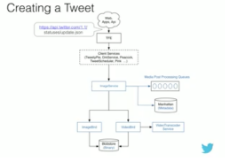RFC Reading List

While we normally think of RFCs as standards, there is actually a lot of useful information published through the IETF process that relates to basic network engineering concepts. Since this information is specifically and intentionally vendor independent, it often goes back to the theoretical basis of a line of thinking, or explains things in a way that’s free of vendor implementation jargon. From time to time, I like to highlight these sorts of drafts, to bring them to the notice of the wider networking community.
A lot of basic research has gone into quality of service from the perspective of queuing, marking, and dropping mechanisms. The result of this research is a wide array of quality of service mechanisms, which tend to be explained either using deep math, or in terms of “look what feature we’ve implemented, and here’s how to configure it.” RFC7806, published this month, is a useful intermediary between the high math and vendor implementation styles of presentation. This RFC describes a model often used for understanding quality of service, the Generalized Processor Sharing model, and how it applies to a few packet queuing, marking, and drop strategies.
Benchmarking routing protocols might not be something you Continue reading
Building USDA’s Platform of the Future with Docker
The United States Department of Agriculture (USDA) develops the federal government’s policies on farming, agriculture, forestry and food and has a budget of over $139 billion. Its goal is to enable farmers and ranchers to thrive, to drive greater awareness … ContinuedHow Twitter Handles 3,000 Images Per Second

Today Twitter is creating and persisting 3,000 (200 GB) images per second. Even better, in 2015 Twitter was able to save $6 million due to improved media storage policies.
It was not always so. Twitter in 2012 was primarily text based. A Hogwarts without all the cool moving pictures hanging on the wall. It’s now 2016 and Twitter has moved into to a media rich future. Twitter has made the transition through the development of a new Media Platform capable of supporting photos with previews, multi-photos, gifs, vines, and inline video.
Henna Kermani, a Software Development Engineer at Twitter, tells the story of the Media Platform in an interesting talk she gave at Mobile @Scale London: 3,000 images per second. The talk focuses primarily on the image pipeline, but she says most of the details also apply to the other forms of media as well.
Some of the most interesting lessons from the talk:
-
Doing the simplest thing that can possibly work can really screw you. The simple method of uploading a tweet with an image as an all or nothing operation was a form of lock-in. It didn’t scale well, especially on poor networks, which made it Continue reading
Startup Offers Combined Container Networking, Storage
Founded by Cisco UCS veterans, Diamanti built an appliance for automated container deployments with preconfigured networking and storage.
